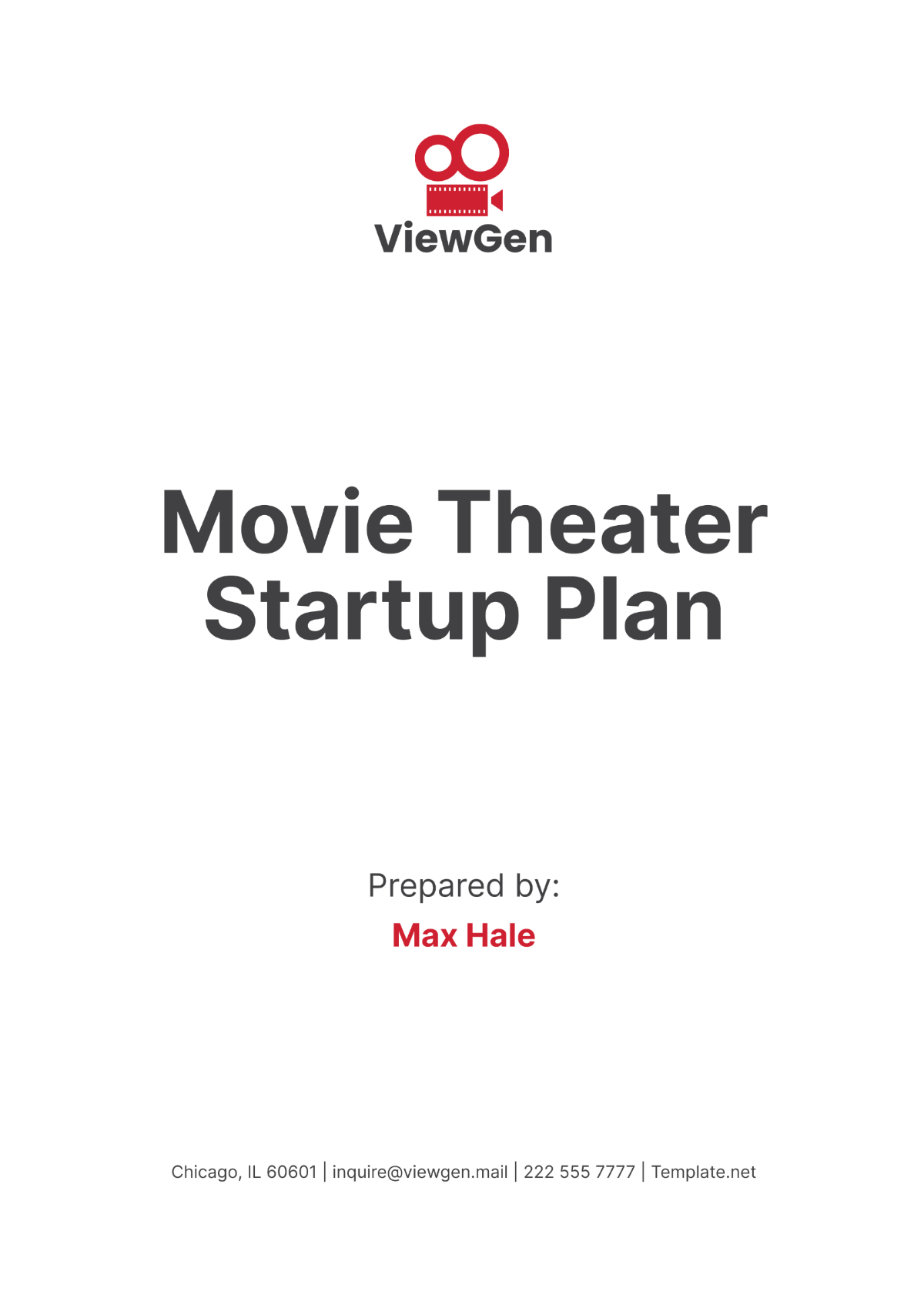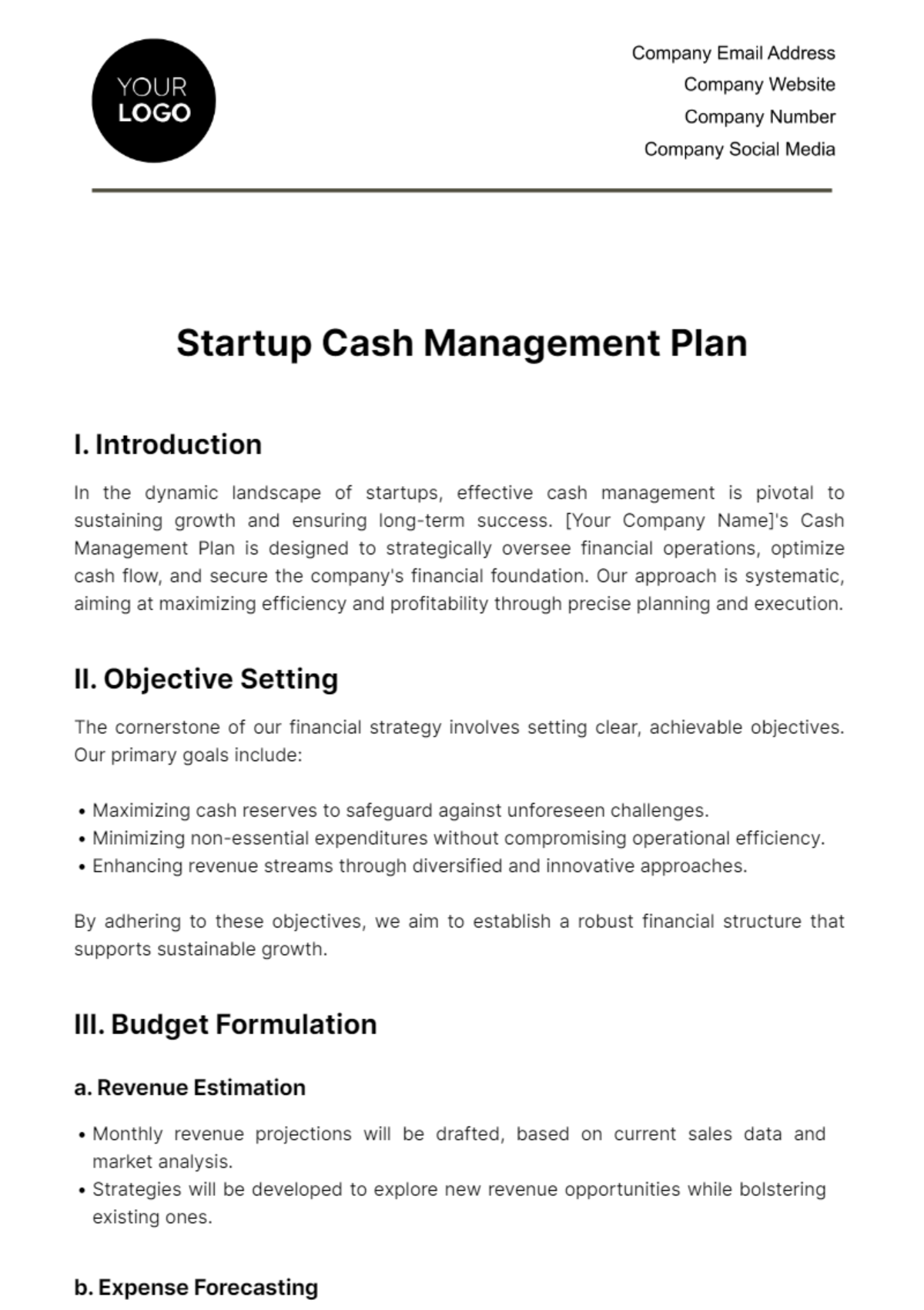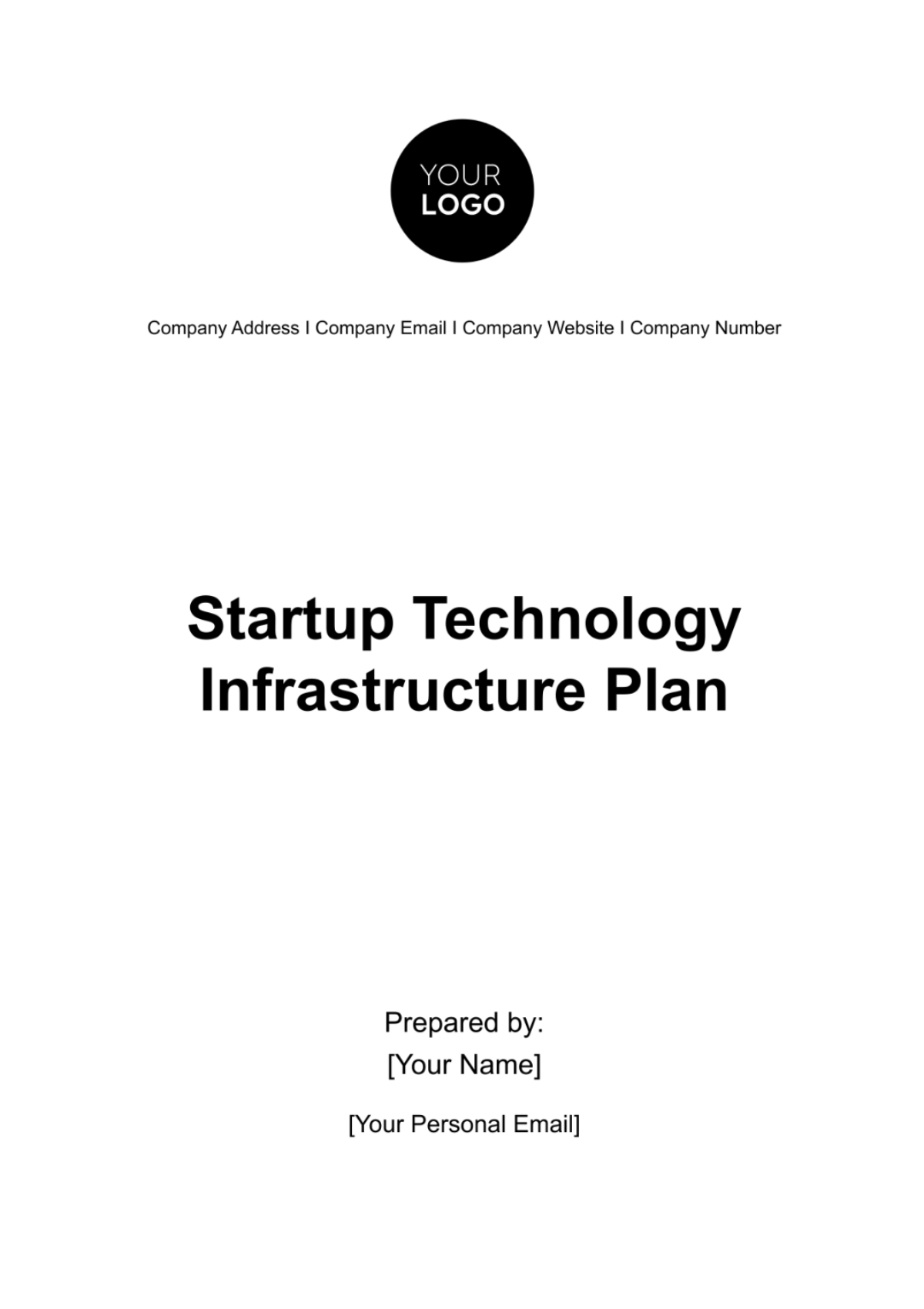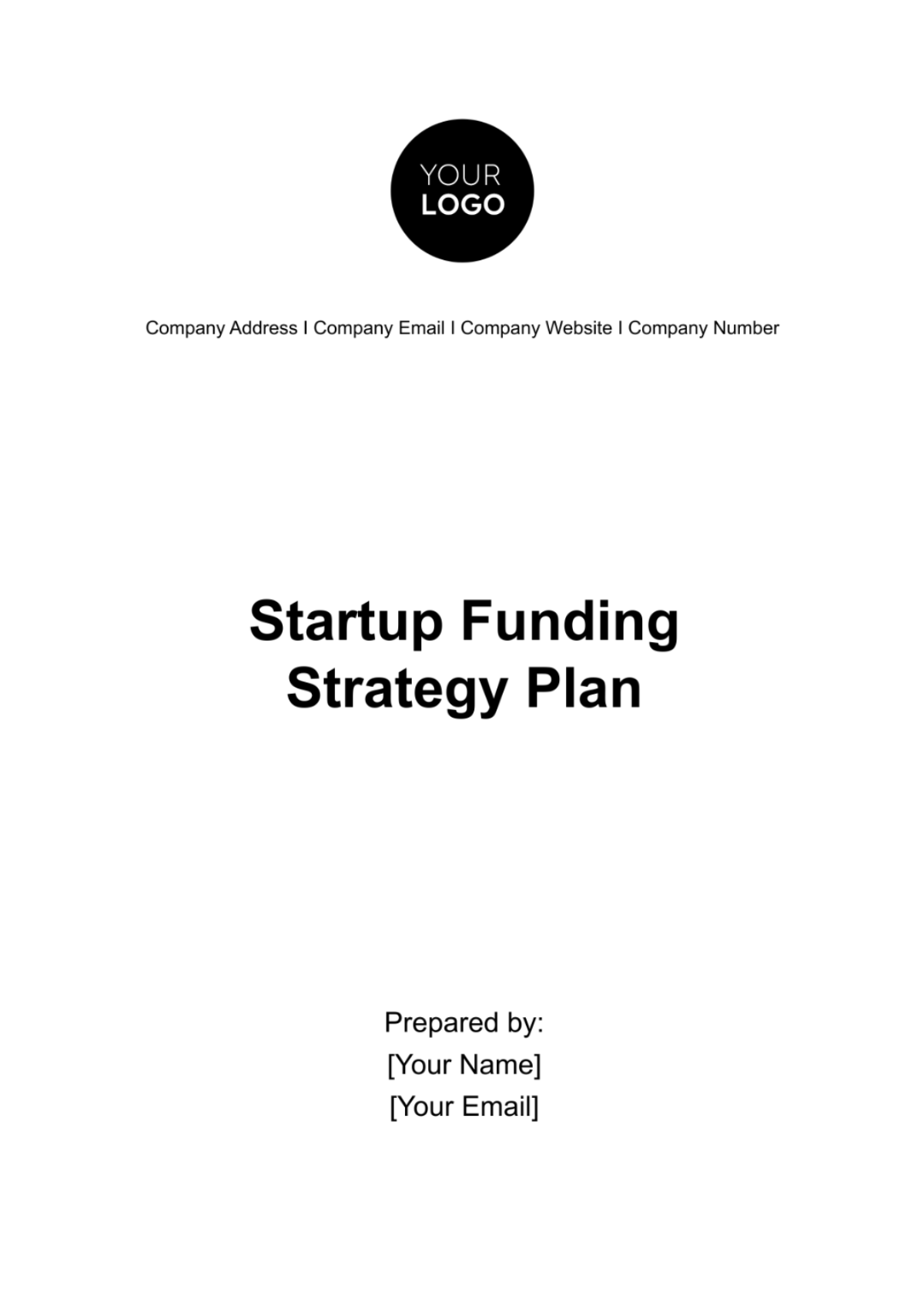Startup Organizational Change Management Plan
1. Executive Summary
This Organizational Change Management Plan for [Your Company Name] aims to guide the company through [specific changes, e.g., structural, technological, process-related] that are critical for scaling operations and sustaining growth in the competitive [Your Industry] industry. This document outlines the strategies for managing these changes, ensuring smooth transition, minimizing disruptions, and maintaining high morale and productivity among all stakeholders.
2. Change Management Overview
Change management at [Your Company Name] involves a structured approach to transitioning individuals, teams, and the organization from a current state to a desired future state. This process will help to achieve [specific goals, e.g., enhanced efficiency, market expansion, technological advancement] while managing the human aspects of change.
3. Objectives of the Change Management Plan
The core objectives of the Change Management Plan for [Your Company Name] are designed to ensure that the organizational transitions are smooth, efficient, and align with our long-term strategic goals. Given the dynamic nature of the [Your Industry] industry, our startup must adapt to changes swiftly while minimizing disruptions to our operations and workforce. The detailed objectives are as follows:
3.1 Ensure Smooth Transition
The primary objective is to facilitate a seamless transition from current operational, cultural, and technological states to the desired future states without causing significant disruptions to daily workflows. This involves a meticulous planning process, where each phase of the change is designed, tested, and implemented with precision to avoid any negative impact on productivity.
3.2 Maintain or Enhance Employee Morale and Engagement
Change can often be met with resistance or anxiety among employees, which can impact morale and engagement negatively. A key objective of this plan is to keep the workforce motivated and engaged through transparent communication, inclusive decision-making processes, and by providing clear visions of the benefits that the changes will bring to each individual and the company as a whole.
3.3 Align Organizational Processes and Systems with Strategic Goals
As [Your Company Name] evolves, it is imperative that our processes, systems, and organizational structure remain aligned with our strategic goals. This objective focuses on ensuring that all changes contribute positively towards achieving our long-term visions, such as market expansion, customer satisfaction, innovation, and operational efficiency.
3.4 Proactively Manage Risks and Address Challenges
Change management is inherently risky, with potential for unforeseen challenges and resistance. An objective of this plan is to proactively identify potential risks and challenges associated with the change processes and to develop and implement strategies to mitigate these risks before they impact the organization.
3.5 Foster a Culture of Continuous Improvement and Adaptability
In the fast-paced environment of [Your Industry], adaptability and continuous improvement are key to sustaining competitiveness. This plan aims to instill a culture where change is not only embraced but is also seen as an opportunity for personal and professional growth, innovation, and continuous improvement.
3.6 Enhance Customer Satisfaction and Service Delivery
While internal changes are pivotal, the ultimate goal is to enhance the value provided to our customers. This objective focuses on improving service delivery, product quality, and customer engagement through more efficient processes, better technology, and a more motivated workforce, thereby increasing customer satisfaction and loyalty.
4. Scope of Change
The scope of change within [Your Company Name] encompasses various dimensions of the organization, aiming to transform the startup into a more agile, efficient, and competitive entity in the [Your Industry] market. The change will touch upon several key areas:
4.1 Technological Advancements
Introducing new technologies or upgrading existing systems to enhance operational efficiency, data analytics capabilities, and customer service. This may include the implementation of new software tools, automation of manual processes, or the adoption of cloud-based solutions to foster innovation and scalability.
4.2 Process Optimization
Reengineering existing processes or establishing new procedures to improve workflow efficiency, reduce waste, and enhance quality control. This could involve changes in production methods, customer service protocols, or internal communication channels to streamline operations and improve output quality.
4.3 Organizational Restructuring
Modifying the organizational structure to better align with strategic goals, which may include the creation of new departments, merging of existing ones, or the introduction of new roles and responsibilities. This restructuring aims to enhance collaboration, agility, and the effective allocation of resources.
4.4 Cultural Transformation
Cultivating a change-positive organizational culture that values adaptability, innovation, and continuous learning. Efforts will be focused on building a supportive environment where feedback is encouraged, and employees are empowered to take initiative and contribute to the company's growth.
4.5 Skill Development and Training
Investing in the workforce by providing training and development opportunities to equip employees with the skills needed to thrive in the new environment. This includes technical skills related to new tools and technologies, as well as soft skills like change management, leadership, and teamwork.
4.6 Customer Engagement and Experience
Revamping strategies related to customer engagement and experience to ensure that changes within the organization translate into enhanced value for the customers. This could involve introducing new customer service platforms, personalized marketing campaigns, or innovative product features.
4.7 Compliance and Governance
Ensuring that all changes comply with industry regulations and standards, and that governance structures are in place to oversee the implementation and sustainability of the changes. This includes data protection measures, quality assurance processes, and ethical business practices.
Each of these areas represents a critical component of the comprehensive change that [Your Company Name] seeks to achieve. By meticulously planning and executing changes across these dimensions, the company aims to enhance its competitive edge, foster a resilient and innovative culture, and deliver superior value to its customers and stakeholders.
5. Stakeholder Analysis and Communication Plan
An essential element of effective change management is understanding and addressing the needs, concerns, and influence of various stakeholder groups within and around [Your Company Name]. This chapter provides a comprehensive Stakeholder Analysis followed by a detailed Communication Plan. The analysis identifies key stakeholder groups, assesses their interest and potential impact on the change process, and outlines tailored communication strategies to engage each group effectively.
The objective is to ensure that all stakeholders are not only informed about the changes but also understand their role within the transition, thereby fostering a collaborative environment conducive to successful change implementation. Engaging stakeholders early and continuously helps in mitigating resistance, leveraging support, and gathering valuable feedback that can shape the change process for better outcomes.
Stakeholder Analysis
The table below segments key stakeholders into distinct groups, highlighting their respective interests in the change process, the impact the changes may have on them, and the strategies we plan to employ to ensure effective and clear communication with each group. This analysis serves as the foundation for developing a comprehensive communication plan that addresses the specific needs and concerns of each stakeholder group, ensuring their support and involvement throughout the change process.
Stakeholder Group | Interest | Impact | Communication Strategy |
|---|---|---|---|
Employees | High | High | Regular updates, Q&A sessions, feedback solicitation |
Management | High | High | Strategic alignment meetings, progress reports |
Customers | Medium | Medium | Updates through [Your Company Website], [Your Company Social Media], and direct communication |
Suppliers | Low | Low | Email updates regarding any changes affecting procurement |
Communication Plan
Following the stakeholder analysis, the communication plan outlines how we intend to keep each stakeholder group informed and engaged throughout the change process. It specifies the objectives of our communication efforts, the channels we will use, the frequency of communications, and the type of content we will share. The plan is designed to be flexible and responsive to stakeholder feedback and will be adjusted as needed to ensure maximum effectiveness and transparency.
6. Change Management Team
The dedicated Change Management Team is tasked with planning, executing, and monitoring the change initiatives outlined in this plan. Comprising individuals with diverse expertise and responsibilities, this team serves as the central point of contact for addressing concerns, gathering feedback, and ensuring the smooth implementation of change across the organization. Below is an overview of the roles and contact information of each team member.
Role | Name | Contact Information |
|---|---|---|
Change Lead | [Name or Position] | [Email/Phone] |
HR Representative | [Name or Position] | [Email/Phone] |
IT Lead | [Name or Position] | [Email/Phone] |
Department Heads | [Name or Position] | [Email/Phone] |
7. Change Readiness Assessment
A comprehensive assessment will be conducted to evaluate the organization's readiness for change, identifying potential resistance and areas that may require additional support. The assessment will cover organizational culture, current processes, technology infrastructure, and employee skill sets.
8. Training and Support Plan
To facilitate a smooth transition, [Your Company Name] will provide comprehensive training and support tailored to different stakeholder needs. This includes:
Technical Training: For employees affected by new technologies or systems.
Process Training: For teams adapting to new or modified operational processes.
Leadership Training: For management to effectively lead their teams through change.
9. Risk Management and Mitigation Strategies
Managing risks associated with organizational change is crucial for ensuring smooth transitions and minimizing disruptions. We outline the identified risks, their likelihood and impact, and the corresponding mitigation strategies. By proactively addressing potential challenges, we aim to safeguard the success of our change initiatives and maintain operational continuity.
Risk | Likelihood | Impact | Mitigation Strategy |
|---|---|---|---|
Employee Resistance | Medium | High | Effective communication, involvement in the change process, and addressing concerns promptly |
Disruptions to Operations | High | Medium | Phased implementation, contingency planning |
Technical Glitches | Medium | High | Comprehensive testing, having IT support on standby |
10. Implementation Timeline
Effective planning and execution are essential for the successful implementation of organizational changes. Table 10 provides a detailed timeline of activities, spanning key phases from planning to post-implementation review. This timeline serves as a roadmap for guiding our change initiatives, ensuring timely execution and alignment with strategic objectives.
Phase | Activities | Start Date | End Date |
|---|---|---|---|
Planning | Stakeholder analysis, readiness assessment | [Date] | [Date] |
Communication | Initial briefings, communication plan rollout | [Date] | [Date] |
Training | Start of training programs | [Date] | [Date] |
Implementation | Phased rollout of changes | [Date] | [Date] |
11. Monitoring and Evaluation
Regular monitoring will be conducted to assess the progress of the change initiatives against the plan. Evaluation will focus on the achievement of objectives, stakeholder satisfaction, and the identification of areas for continuous improvement.
12. Feedback Mechanism
A formal feedback mechanism will be established to gather insights from all stakeholders. This will include surveys, suggestion boxes, and dedicated email channels to ensure that all voices are heard and considered.
13. Conclusion
The Organizational Change Management Plan for [Your Company Name] is a comprehensive blueprint designed to navigate the complexities of change within our startup. By adhering to this plan, we aim to minimize disruption, maximize engagement, and successfully transition to a new state that aligns with our strategic goals.
14. Appendices
Appendix A: Detailed Training Schedule
Appendix B: Change Readiness Assessment Report
Appendix C: Detailed Risk Management Plan
For further information or to provide feedback, please contact [Your Name] at [Your Email] or visit [Your Company Website].


























